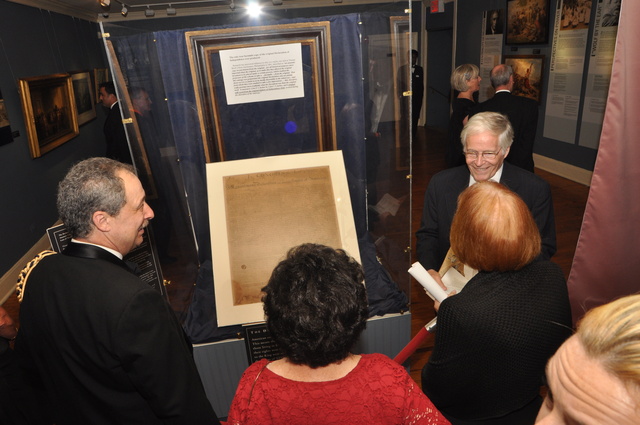"Foundations of Freedom" at Fraunces Tavern Museum Tracks History of American Liberty - Rare Declaration of Independence, Washington, Franklin, Hancock Letters Displayed
April 16, 2010 (PRLEAP.COM) Education News
The exhibit which began last year at Fraunces Tavern® Museum in New York City as "Magna Carta and the Foundations of Freedom" continues today as "The Foundations of Freedom." While the 1215 Magna Carta formerly on display has been returned to the United Kingdom in its stead some fresh treasures have been added to this popular exhibit. All together they tell the story of the evolution of human rights in America, beginning with the influence of Magna Carta through today's multicultural scene.Exhibit highlights include:
- A rare "true" copy of the Declaration of Independence-one of only two known "anastatic" copies in existence. (The other is at Independence Hall in Philadelphia.) Produced in the 1840's it is referred to as a "true" copy of the handwritten original because it was created through a process involving direct contact with the original document-as opposed to an artist producing a copy of it by eye, which is what is typically seen. In fact this anastatic facsimile is in far better condition than the original and some theorize the reason is because this duplication process was harmful to the original document, causing it to fade. Today, the visitor to Fraunces Tavern will see the Declaration as it must have appeared in the early 1800's, down to every last detail-even the folds of the paper.
- A letter signed by Benjamin Franklin regarding the Humane Conduct of War dating to 1782.
- A letter signed by George Washington regarding the promotion of Benedict Arnold (whom he held in high regard at the time-1777.)
- The stamp that caused a revolution-and a historic reply. Visitors will be able to see one of King George's infamous tax stamps that helped incite the American Revolution. Displayed directly beside it is a public letter signed by John Hancock decrying the Crown's taxation without the consent of the people.
- For those who may have missed it, the Museum has arranged for a highly accurate copy of the 1215 Magna Carta to continue on display in the same case where the original was presented until last December.
"The Foundations of Freedom" is an exceptional opportunity to see some keystone items representing America's struggle for freedom and an opportunity to better understand how the ideas for these freedoms were born. Admission to the exhibit includes all exhibits extending through two floors and eight galleries at Fraunces Tavern® Museum. This includes the famous "Long Room" where George Washington bade farewell to his officers in 1783. "The Foundations of Freedom" will continue through June 2010. For more information visit www.frauncestavernmuseum.org.
- About Fraunces Tavern -
Fraunces Tavern was built in 1719 as an elegant residence and purchased in 1762
by tavern-keeper Samuel Fraunces. The tavern played a significant role in pre-Revolutionary War activities and later housed early U.S. government offices of the Departments of War, Treasury and Foreign Affairs (today's State Department). It is best known as the site where General George Washington bade farewell to the officers of the Continental Army on December 4th, 1783.
In 1904, the Sons of the Revolution in the State of New York purchased the tavern, saving it from the wrecking ball. A restored Fraunces Tavern was opened to the public in 1907 featuring a Museum and Restaurant. Both operations have continued, independently run, to this day. In 2008 Fraunces Tavern was added to the National Register of Historic Places.
Fraunces Tavern® is a registered service mark of Sons of the Revolution in the State of New York, Inc., a not-for-profit corporation, instituted in 1876 and incorporated in 1884.
